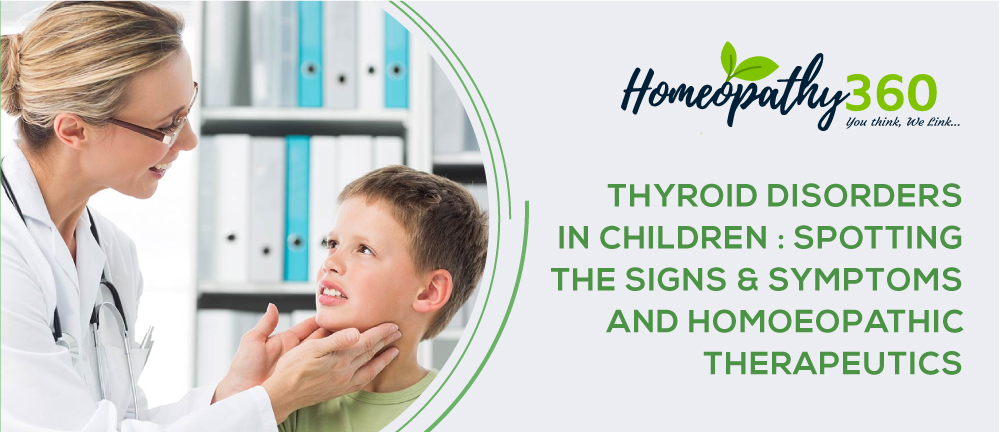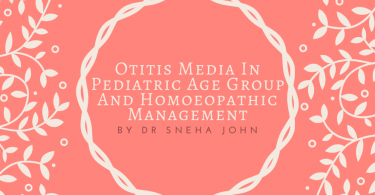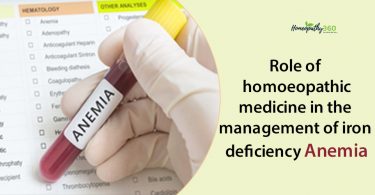
ABSTRACT –
Thyroid disorders in paediatric and adolescent age groups are often missed by primary healthcare physicians, family physicians and parents due to the lack of awareness about the disorders and expensive nature of laboratory investigations. Due to these factors diagnostically, delays are observed. A total of 784 subjects (males-336, females-448), aged between 1-19 (Mean 11.12, SD-6.23) years, who under-went estimation of TFTs were studied. The prevalence rate of all thyroid function abnormalities was 9.18%. [4]
KEYWORDS – Hypothyroidism, hyperthyroidism, differences, in children, thyroid disorders, goitre, signs and symptoms.
INTRODUCTION –
Thyroid gland is a small butterfly shaped endocrine gland located in the neck anterior to the trachea between the cricoid cartilage and the suprasternal notch. It consists of two lobes connected by an isthmus. The normal thyroid is 12–20 grams in size, soft in consistency and highly vascular. The thyroid gland produces mainly two hormones, thyroxine (T4) and triiodothyronine (T3). Production of T3 and T4 in the thyroid gland is stimulated by thyroid stimulating hormone (TSH), released from pituitary in response to the hypothalamic tripe tide, thyrotrophin-releasing hormone. Some of the most common thyroid disorders are goitre, hypothyroidism, hyperthyroidism and thyroiditis.
GOITRE [5]
Goitre is the abnormal enlargement of the thyroid gland. Goitres are usually painless, a large goitre can cause a cough and make it difficult for you to swallow or breathe.
The most common cause of goitres worldwide is a lack of iodine in the diet. In India, where the use of iodized fairly salt is common due to its easy availability, a goitre is more often due to the over- or underproduction of thyroid hormones or to nodules in the gland itself.
Treatment depends on the cause, size and symptoms of the goitre. Small goitres that aren’t noticeable and don’t cause problems usually don’t need treatment.
Causes: [5]
Several things can cause your thyroid gland to enlarge. Some of the most common are:
- Iodine deficiency: Iodine is essential for the production of thyroid hormones, and is found primarily in seawater and in the soil in coastal areas. In the developing world, people who live inland or at high elevations are often iodine deficient and can develop goitres when the thyroid enlarges in an effort to obtain more iodine. Iodine deficiency may be made worse by a diet high in hormone-inhibiting foods, such as cabbage, broccoli and cauliflower. In countries where iodine is routinely added to table salt and other foods, a lack of dietary iodine isn’t usually the cause of goitres.
- Graves’ disease: Goitre can sometimes occur when your thyroid gland produces too much thyroid hormone (hyperthyroidism). In someone who has Graves’ disease, antibodies produced by the immune system mistakenly attack the thyroid gland, causing it to produce excess thyroxine. This overstimulation causes the thyroid to swell.
- Hashimoto’s disease: Goitre can also result from an underactive thyroid (hypothyroidism). Like Graves’ disease, Hashimoto’s disease is an autoimmune disorder. But instead of causing your thyroid to produce too much hormone, Hashimoto’s damages your thyroid so that it produces too little. Sensing a low hormone level, your pituitary gland produces more TSH to stimulate the thyroid, which then causes the gland to enlarge.
- Multi-nodular goitre: In this condition, several solid or fluid-filled lumps called nodules develop in both sides of your thyroid, resulting in overall enlargement of the gland.
- Solitary thyroid nodules: In this case, a single nodule develops in one part of your thyroid gland. Most nodules are noncancerous (benign) and don’t lead to cancer.
- Thyroid cancer: Thyroid cancer is far less common than benign thyroid nodules. A biopsy of a thyroid nodule is very accurate in determining whether it’s cancerous.
- Pregnancy: A hormone produced during pregnancy, human chorionic gonadotropin (HCG), may cause your thyroid gland to enlarge slightly.
- Inflammation: Thyroiditis is an inflammatory condition that can cause pain and swelling in the thyroid. It may also cause the body to produce too much or too little thyroxine.
Symptoms:[5]
Not all goitres cause signs and symptoms. When signs and symptoms do occur they may include:
- A swelling at the base of the neck that may be particularly obvious when you shave or put on makeup
- A tight feeling in throat
- Coughing
- Hoarseness
- Difficulty swallowing
- Difficulty breathing
HYPOTHYROIDISM
Hypothyroidism is emerging to be one of the most common endocrinological disorders worldwide which when left undetected or untreated leads to severe complications.
Hypothyroidism is the most common kind of thyroid disorder in children[8].If the thyroid shows atrophy or destruction of its secretary cells or is inadequately stimulated, the syndrome of hypothyroidism develops because of lack of thyrotrophin-releasing from the hypothalamus or thyroid-stimulating hormone from the anterior pituitary. A child who has hypothyroidism since birth is called as a cretin.[1] The most common cause of acquired hypothyroidism in children and teens is an autoimmune disease known as Hashimoto’s thyroiditis, in which the immune system attacks the thyroid, causing inflammation and interfering with the gland’s ability to produce thyroid hormone.[7]
Other common causes of hypothyroidism in children include:
- not enough iodine in a child’s diet
- being born with a non-functional thyroid or without a thyroid gland (also called congenital hypothyroidism)
- improper treatment of a mother’s thyroid disease during pregnancy
- abnormal pituitary gland.[7]
HYPERTHYROIDISM
Hyperthyroidism is the over activity of thyroid caused by production of antibodies against the person’s own thyroid cells and the most common form is Graves’disease. [1]
Causes of hyperthyroidism [6]
- Graves’ disease is the most common cause of hyperthyroidism in children and adolescents. This is an autoimmune disorder in which the body produces thyroid-stimulating antibodies, which stimulate the thyroid gland to produce too much thyroid hormone.
- Neonatal Graves’ disease is the most common cause of hyperthyroidism in newborns. This happens after a mother with Graves’ disease passes her thyroid-stimulating antibodies to her child, causing the baby to have a temporary case of hyperthyroidism. Neonatal Graves’ disease goes away once the mother’s antibodies are cleared from the baby’s bloodstream, usually after a few weeks.
- Autonomous thyroid nodules (also called toxic or hot nodules) are growths in the thyroid gland that produce too much thyroid hormone.
- Thyroiditis occurs when the thyroid gland becomes inflamed, causing too much thyroid hormone to leak out of the damaged thyroid and into the blood. Thyroiditis can be caused by infections, autoimmune conditions, radiation exposure, or certain medications. Hyperthyroidism caused by thyroiditis is temporary and usually goes away within eight to 12 weeks.
SIGNS AND SYMPTOMS OF HYPOTHYROIDISM AND HYPERTHYROIDISM
Thyroid disorders can be tricky to recognise and diagnose. A few common symptoms should be kept in mind by parents as well as primary health care physicians or family physicians between hypothyroidism and hyperthyroidism in children, the difference of thesame is given in the table below:
Table.1 Difference between Signs and Symptoms of Hypothyroidism and Hyperthyroidism [1] [6] [7]
| SNO. | HYPOTHYROIDISM | HYPERTHYROIDISM |
| 1. | Abdomen pot bellied and protruding tongue | Staring or bulging eyes |
| 2. | Weight gain | Difficulty in gaining weight |
| 3. | Constipation | Frequent bowel movements |
| 4. | Low body temperature | Always feeling hot even when others are not |
| 5. | Lack of energy | Nervousness and irritability; Trembling of hands |
| 6. | Mental growth is retarded | Trouble in concentrating and poor school performance |
| 7. | Rough, dry, Wrinkled skin with scanty hair | Warm, moist skin |
| 8. | Low blood pressure | High blood pressure |
| 9. | Heart failure | Fast/irregular heartbeat. |
HOMOEOPATHIC MEDICINES[2][3][9]
Following are some frequently prescribed homoeopathic remedies in thyroid disorders depending upon an individual’s need.
- Thyroidinum–Thyroid produces anaemia, emaciation, muscular weakness, sweating,and headache, nervous tremor of face and limbs, tingling sensation, paralysis. Heart rate increased exopthalamus and dilation of pupils. In myxoedema (hypothyroidism of adults) and cretinism its effects are striking. Infantile wasting. Delayed union of fractures. Thyroid exercises a general regulating influence over the mechanism of organs of nutrition, growth and development. Thyroid weakness causes craving for large amountof sweets.
- Calcarea carbonica–Babies:Vomiting of milk.Obesity- puts on weight easily.Bones weak, disturbed development, caries, dentition late and difficult.Slow development; slow closing of fontanelles. Swollen glands. Frequent colds. With desire of sweets.
Goitre.Weaknessin extremities and sprains easily. Cold, clammy hands and feet. Unhealthy skin with cracks aggravated by water.
- Calcarea iodata–This remedy is used in the treatment of scrofulousaffections, especially enlarged glands, tonsils,etc. Thyroid enlargement about time of puberty. Flabby children subject to colds. Skin cracked, falling out of hair.
- Iodium–Overactivity on all levels. Like hyperthyroid state. Restlessness. Impatience. Irritable. Violent impulses if forces himself to sit still. Anxiety ameliorated by eating. Hyperactive child. Increased appetite with emaciation. Enlarged glands with emaciation. Facial paralysis from suppression of goitre. Goitre. Throat –Swelling of glands. Chronic diarrhoea with emaciation, in children.
- Spongia tosta–This remedy is used in respiratory, glands and heart conditions. Mind is cheerful alternating with irritability, sadness. There is fear of heart disease, dead, future. Waking with great fear after midnight. Swelling and induration of glands. Slow onset of disease. Throat – Pain from eating sweets, thyroid, and goitre. Respiration- dryness of all air passages; dry croupy, rough and barking cough. Generalities –Aggravation before midnight; heat; warm room; sleep; exertion and motion. Amelioration by warm foods and drinks.
CONCLUSION –
The symptoms of thyroid disorders may seem disguised and often ignored due to the mediocrity of some symptoms in children such as weight gain or weight loss, changes in appetite, changes in mood, and end up labelling the child as simply fussy. Thus, it is important to keep in mind the list of signs and symptoms of hypothyroidism and hyperthyroidism observed in children. If relevant symptoms are observed by a physician and thyroid disorder is suspected in a child, it is important to get laboratory investigations done with the basic test being thyroid function test (a blood test). As a parent observing similar symptoms in their child, a consultation with their family physician or a homoeopathic physician is recommended for proper diagnosis.
REFERENCES –
- Mackenna BR Callander R.Illustrated Physiology. Sixth edition. Singapore: Churchill Livingstone, 1997.
- Allen H.C, Key notes- Rearranged and classified with leading remedies of Materia medica and Bowel nosodes; 10 Edition; New Delhi, India; B. Jain Publishers, 2005.
- Boericke Willliam; Boericke’s New Manual of Homoeopathic Materia medica with Repertory; Third revised and Augmented edition; New Delhi, India; B. Jain Publishers, 2007.
- Lakshminarayana R G, Sheetal Lakshminarayana G, Nidhish P Sadanandan, et al. Thyroid dysfunction in children and adolescence: Experience of a tertiary care centre in Kerala. IJPR,2016.1.01; 3(1):3-8.
- Mayo clinic.Goitre. 2019.11.27.Available from-https://www.mayoclinic.org/diseases-conditions/goiter/symptoms-causes/syc-20351829
- Boston Children’s Hospital. Hyperthyroidism. Available from- https://www.childrenshospital.org/conditions-and-treatments/conditions/h/hyperthyroidism
- Stanford Children’s Health. Congenital Hypothyroidism in Children. Available from – https://www.stanfordchildrens.org/en/topic/default?id=hypothyroidism-in-children-90-P01963
- Endocrine Web.Macht Hiliary. Hypothyroidism in Children. Available from- https://www.google.com/amp/s/www.endocrineweb.com/amp/20247
- RADAR 10 Software
About Author:
Dr.Anureet
Bhms, MD. (hom), PGD counselling & spiritual health;
Professor HOD, Organon of Medicine, Homoeopathic Medical College and Hospital, Chandigarh.
Dr.Ishita
Intern, Homoeopathic Medical College and Hospital, Chandigarh.





